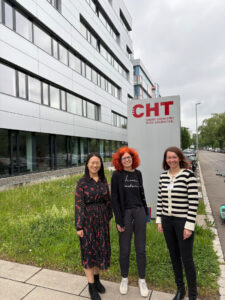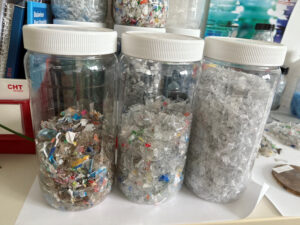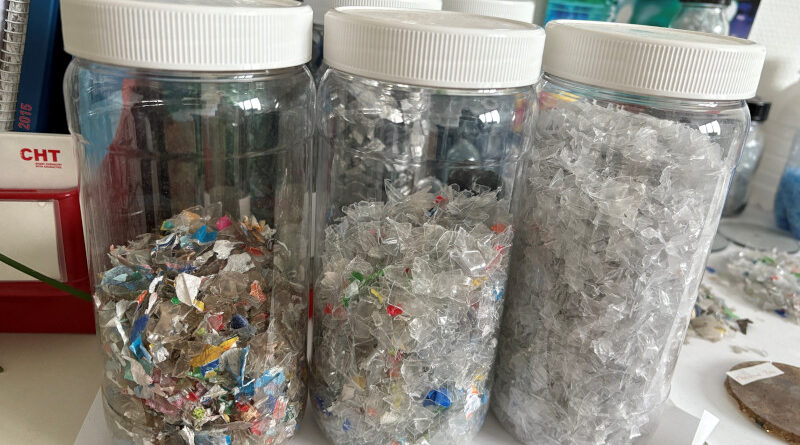Sustainability – not just a passing trend
While Heike was exploring the EU’s regulatory landscape in Brussels – from the SUP Directive to the Circular Packaging Vision 2030 to the implementation of Extended Producer Responsibility (EPR) – I made my way to Tübingen, to explore how these big ideas are translated into real-world action product developments and within corporate strategies.

My destination: speciality chemicals company CHT. A manufacturer of products that support recycling? Certainly a must-visit on any circular economy tour. But I quickly learned that the topic is considered in a much broader and more comprehensive way here.
I met with Xiaohui Dong, Technical Manager for Recycling Applications, and Dr Annegret Vester, Chief Sustainability Officer. What began as a conversation about PET recycling aids quickly unfolded into a wider discussion of corporate transformation and the balancing act between environmental ambition and industrial reality.
CHT’s PET recycling unit may be compact — two full-time and one part-time staff in Germany — but their impact is significant. Since 2008, their product line has grown to include Tubiwash, Tubifoam, and Tubiwet, designed for washing, de-foaming, and separation. Supporting products like Tubifloc (wastewater treatment) and Tubicoat (anti-blocking) round out a portfolio that is as flexible as it is global. Local adaptation is key: products are reformulated to address local differences in water hardness, contamination, or processing methods.

For Dong and her colleagues, biobased chemistry is the next frontier. They are testing a new washing agent made entirely from renewable raw materials – not just biodegradable – and potentially food-contact safe.
But the loop doesn’t close with chemistry alone. Sustainability at CHT is embedded — not simply an add-on. Dr Vester, a chemist by background, has been shaping the company’s group-wide sustainability strategy for over a decade. The company is globally EcoVadis certified and validated by the Science Based Targets initiative (SBTi) and targets net-zero by 2045, with interim targets of a 42% GHG reduction in Scope 1 & 2 and 25% in Scope 3 by 2030.
With upstream emissions from raw materials posing the biggest challenge, CHT engages in annual supplier assessments and sustainability dialogues – nudging even hesitant partners into certifications and greener practices.
The company set clear targets years ago – for water consumption, energy use, and waste generation. All of it has been tracked globally from the start. In times of growing regulatory pressure, increasing directives, and rising demands for transparency and documentation, that long-standing experience is now proving invaluable, says Annegret Vester. “We quickly understood that sustainability is not just a passing trend. In the end, the only way we can successfully position ourselves for the future is by truly becoming sustainable.”
Yours,
Gabriele Kosmehl
PS: Are you interested in taking part in the tour? Then send us an email to: [email protected]


